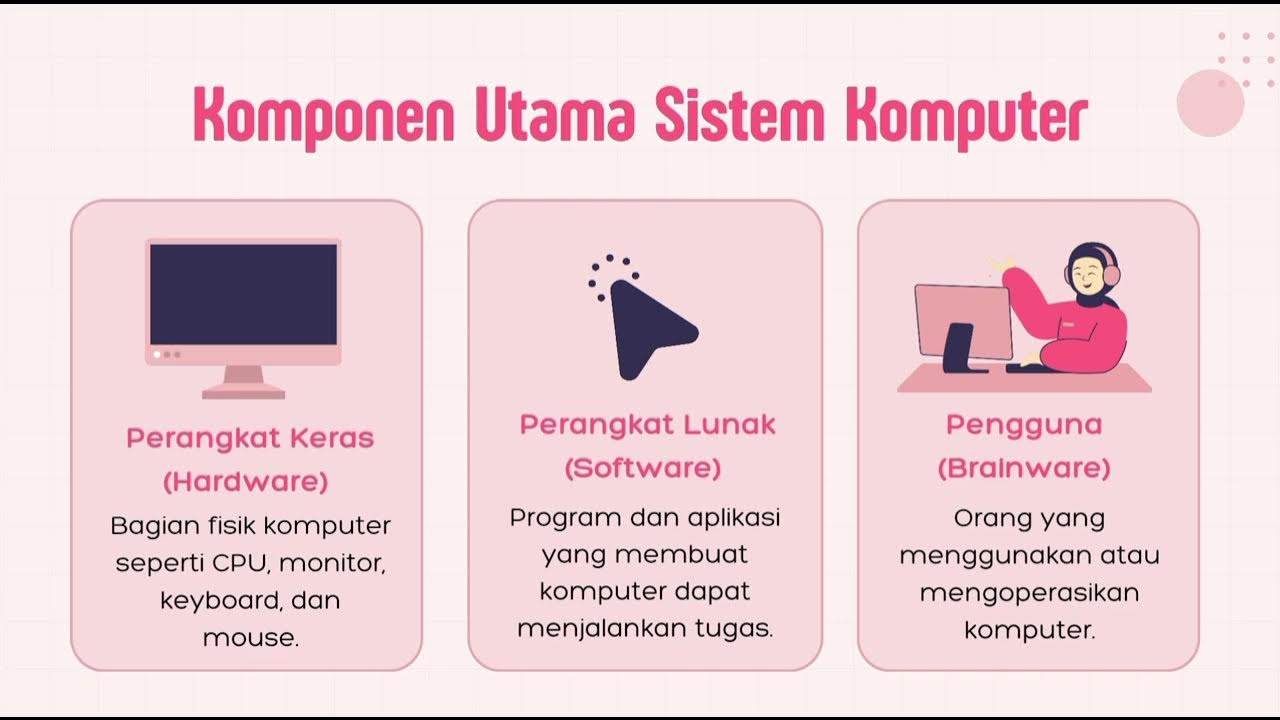REVERSE ENGINEERING | Pengertian & Contoh Sederhananya
Summary
TLDRIn this video, Gontor introduces the concept of reverse engineering, explaining how it can be applied to both hardware and software. He provides examples ranging from food, such as reverse engineering a nasi goreng recipe, to electronics, where he demonstrates how to build an automatic light system using Arduino. Gontor encourages viewers to dive deeper into reverse engineering through hands-on experimentation and exploration, using available tutorials and without relying on complete source code. This video aims to inspire creativity and critical thinking in tech enthusiasts and makers.
Takeaways
- 😀 Reverse engineering is the process of analyzing a product or system's structure, functionality, and operation.
- 😀 This method allows for the creation of new devices or software based on the working principles of existing ones, without duplicating them.
- 😀 Reverse engineering is similar to scientific research, but it focuses on human-made products rather than natural phenomena.
- 😀 An example of reverse engineering is analyzing the ingredients and cooking techniques of a dish, like fried rice, to replicate it without directly asking for the recipe.
- 😀 In electronics, reverse engineering can involve analyzing a product like an automatic light system to understand how it functions and then creating a similar system.
- 😀 The automatic light system includes components like Arduino, light sensors, and relays, which work together to detect darkness and control the light.
- 😀 Reverse engineering can also involve deep analysis of a system's program, such as understanding how sensor values control the operation of the light.
- 😀 The process of reverse engineering helps to replicate or create similar systems by breaking down and understanding their components and functionality.
- 😀 The speaker encourages viewers to dive deeper into reverse engineering by analyzing demo videos where source code is not provided.
- 😀 By analyzing available products and systems without direct source code, viewers can practice reverse engineering and gain deeper insights into how they work.
Q & A
What is the main concept of reverse engineering discussed in the video?
-Reverse engineering is the process of analyzing a product or system in terms of its structure, functionality, and operation. This allows the creation of a similar product or system without directly duplicating it.
How is reverse engineering similar to scientific research?
-Reverse engineering is similar to scientific research in that both involve studying an existing subject. However, in scientific research, the subject is a naturally occurring phenomenon, while reverse engineering focuses on human-made creations.
Can you provide an example of reverse engineering in everyday life?
-An example of reverse engineering in everyday life is when you taste a delicious dish, like fried rice, and try to figure out the ingredients and recipe. You break down the components, such as rice, spices, and cooking methods, to recreate the dish.
How is reverse engineering applied to electronics?
-In electronics, reverse engineering involves analyzing an existing system to understand how it works and then recreating it. For instance, in the case of an automatic light system, one would study its components (like an Arduino, light sensor, and relay) and how they work together to replicate or improve the system.
What specific example does the speaker use to explain reverse engineering in electronics?
-The speaker uses the example of an automatic lamp system, where a light sensor detects whether it’s dark or light, and based on that information, an Arduino controls a relay to turn the lamp on or off.
What role does the Arduino play in the automatic lamp system?
-The Arduino in the automatic lamp system is used as the central controller that receives input from the light sensor and activates or deactivates the relay, which in turn controls the lamp based on the ambient light.
Why is it important to understand the components and functions of a system when reverse engineering?
-Understanding the components and functions of a system allows you to replicate or improve the design. This is crucial for creating functional devices and for learning how each part contributes to the overall system.
How does the speaker suggest viewers can deepen their understanding of reverse engineering?
-The speaker encourages viewers to dive deeper into reverse engineering by analyzing the components used in the video demos, identifying the parts of the system, and performing their own research to understand how everything works together.
What challenge does the speaker pose to the viewers regarding the videos?
-The speaker challenges viewers to analyze the demos in the videos where the source code is not provided. Viewers are encouraged to figure out the components and design of the system by themselves, applying reverse engineering techniques.
How does reverse engineering benefit creators working with platforms like Arduino?
-Reverse engineering allows creators to learn from existing designs, understand the inner workings of systems, and then apply that knowledge to build new devices or improve upon existing ones, especially when working with platforms like Arduino.
Outlines

Esta sección está disponible solo para usuarios con suscripción. Por favor, mejora tu plan para acceder a esta parte.
Mejorar ahoraMindmap

Esta sección está disponible solo para usuarios con suscripción. Por favor, mejora tu plan para acceder a esta parte.
Mejorar ahoraKeywords

Esta sección está disponible solo para usuarios con suscripción. Por favor, mejora tu plan para acceder a esta parte.
Mejorar ahoraHighlights

Esta sección está disponible solo para usuarios con suscripción. Por favor, mejora tu plan para acceder a esta parte.
Mejorar ahoraTranscripts

Esta sección está disponible solo para usuarios con suscripción. Por favor, mejora tu plan para acceder a esta parte.
Mejorar ahoraVer Más Videos Relacionados

Komputer Akuntansi - Sistem Komputer Akuntansi

pertemuan 2 Rekayasa Perangkat Lunak

O que é uma SDN-WAN ou SDN-LAN

Video Pembelajaran Pengenalan Seni Rupa Terapan dalam Keseharian Materi Kelas XII Kurikulum Merdeka

Transform Calculus and its applications in Differential Equations

Informática - Aula 4 - Sistemas operacionais
5.0 / 5 (0 votes)
